There are several ways to help bread rise high, light, and fluffy. These are 7 of my favorites; the ones I've had success with over and over again.
Table of Contents
Are you ready to create high, billowy, beautiful loaves of homemade bread?
Professional bakers use various types of dough enhancers, some natural and some not so much. Home bakers who don't know about them are missing out!
These ingredients are sometimes called bread improvers or dough conditioners. They're a great way to get the best possible results from your bread baking adventures.
About dough enhancers
Our grandmothers knew that certain ingredients helped the dough rise faster and higher, have a better texture, and keep longer without going stale or molding.
These natural dough enhancers and bread improvers still work well today!
One of the most frequent questions people ask me is how I achieve those big, fluffy loaves. It's not really a secret - I do what commercial bakeries do.
There are a lot of reasons bread doesn't rise to its full potential, so to speak, but one way to ensure that gorgeous loaf is a dough enhancer.
Now, I am not telling you to use a bunch of chemicals dumped into your recipe. There are tons of natural ingredients that help your bread rise high, light, and fluffy.
What does dough enhancer do?
Bread improvers and enhancers do several things which is why it's best to use a homemade mixture like the one in the recipe card below. Each ingredient works with all the other ingredients.
- It improves how the bread rises
- It improves the texture
- It improves the taste
- It improves the crust
- It makes a lighter, fluffier bread with a more tender crumb
- It even helps to extend the shelf life because it's a natural preservative.
Here are some of my favorite ingredients to make your dough rise higher. You can use one of them or combine several.
Take some time to try each of them to see what works for you.
Ginger
I first learned about adding ¼ teaspoon of powdered ginger from an (almost) ancient cookbook. Old cookbooks are one of my addictions and I found this one in a second-hand store.
The note to add ginger was handwritten on the flyleaf so I tried it - and loved the result.
Ginger is still my favorite dough enhancer additive. This common spice boosts the yeast-like that first cup of coffee hitting you in the morning. The yeast gets more active much more quickly.
Add ¼ teaspoon of ginger with the warm water when you are first proofing the yeast to help your bread rise higher and fluffier.
It won't make your bread taste like ginger, either.
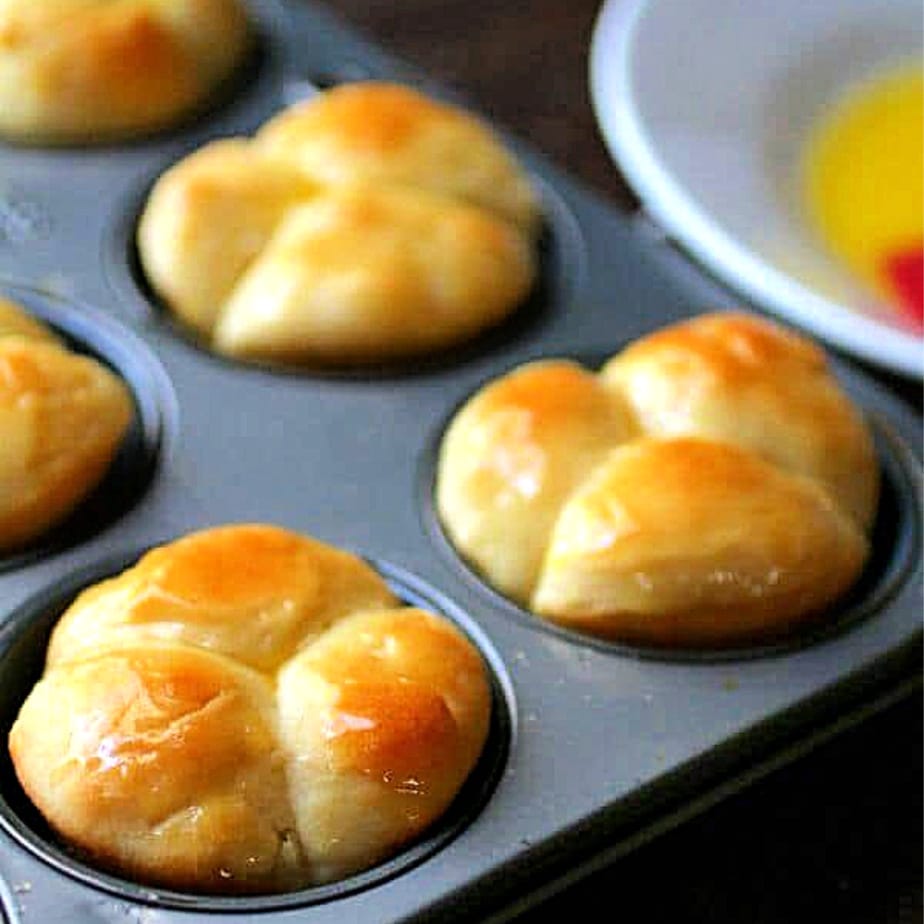
Potato water
The next time you boil potatoes don't salt the water. When the potatoes are done save that cloudy water in a Mason jar.
Cover it tightly and store it in the refrigerator.
Then, when you are ready to make your recipe, warm the potato water to 110F and use it in place of the water or milk (in equal measure).
This works to help your bread rise because of the potato starch that's left in the water. The starch encloses the gas bubbles in dough and strengthens them.
That makes your bread rise lighter and higher. Of course it also gives a pleasant flavor and I feel good about being as frugal as my grandmother was!
Don't keep potato water for more than a few days, though. It sours and can really smell up your kitchen.
Wheat gluten
Wheat gluten is a protein that's present in all wheat flour in various degrees. It's the substance that gives the dough that elastic feel and makes it rise high.
In fact, you could say that next to yeast, gluten is the most important ingredient in bread.
The gluten structure strengthens the dough and holds the gas bubbles produced by the yeast to make the bread rise higher.
It's really helpful when you are using different kinds of flour.
You can buy vital wheat gluten, which is just the gluten. Substitute 1 tablespoon gluten for 1 tablespoon flour in each cup of flour for whole wheat bread and about half that for white.
So, if your recipe calls for 8 cups whole wheat flour you'll remove ½ cup of the flour and add ½ cup of gluten added in with the flour.
If you're making pizza dough or Italian bread you can add about 1 ½ tablespoons per cup of flour to give your bread that chewier texture.
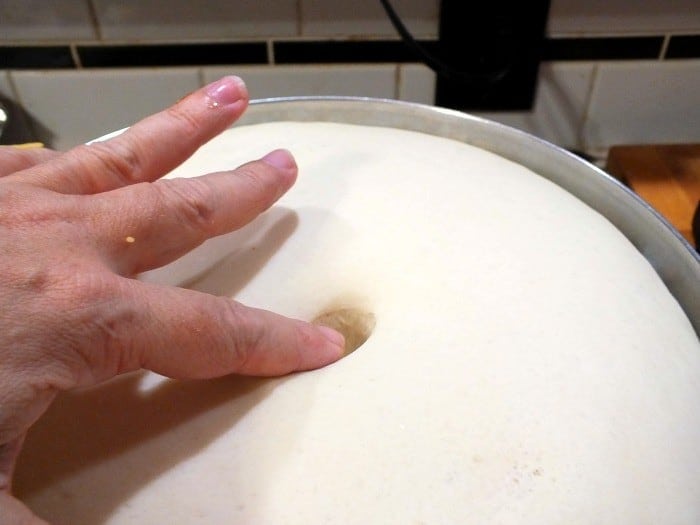
Dry milk powder
Adding 2 tablespoons of instant dry milk powder per loaf of bread will help your bread rise higher, stay soft, and hold the moisture longer. That means it won't get stale as quickly. Dry milk powder creates a more golden brown crust and improves nutrition, too.
Add it with the first cup of flour.
Vitamin C powder (Ascorbic acid)
Don't use this in your artisan-type breads that have a coarser crumb but it will help make sandwich loaves soft -- especially good when it comes to wheat breads.
The acid of vitamin C helps the yeast to work better and also acts as a preservative by deterring the growth of mold and bacteria.
I toss the contents of a bottle of vitamin C tablets in the blender, turn them into a powder, and then store it in a Mason jar.
Use ⅛ teaspoon per loaf of bread, adding it in with the first cup flour.
Lecithin
Lecithin comes from many sources but the most common one for food additives is soy lecithin. It helps keep bread fresher longer plus works with the natural gluten in the bread to make it lighter and fluffier.
Lecithin is a food additive that comes from several sources — one of them being soy. It’s generally used as an emulsifier, or lubricant, when added to food, but also has uses as an antioxidant and flavor protector.
You'll use 1 tablespoon per cup of flour. Add it in with the first cup of flour.
Pectin
Pectin helps the bread stay moist. It also can replace the fat if you want to cut back on oil or butter. It's what is used to make jelly and comes in liquid or granular form.
For making bread I'd use the granules - they're easier to control.
Use1 teaspoon per loaf and add it in with the first cup of flour.
Other possibilities
There are other additives you can use, of course. In addition to the ones mentioned above people add:
- Dried potato flakes
- Apple cider vinegar
- A variety of other ingredients
I tend to stick with those listed here because in the 50+ years I've been making bread they haven't let me down!
What’s new? Check out my Restless Chipotle & Co. Store on Amazon where you'll find all kinds of nostalgic goodness! Thanks so much for being a part of Restless Chipotle!
FAQs
Here are the questions I am most frequently asked about this recipe.
Ingredients or combinations of ingredients that are added to bread dough to get it to rise better, stay softer, and last longer.
Bread improver is another name for dough enhancer.
Yeast turns the starches and sugars in flour to carbon dioxide gas which in turn inflates air bubbles in the bread causing it to rise. Since the yeast is also multiplying and producing more carbon dioxide the bread rises more and more.
It makes the bread lighter, fluffier, and more flavorful as well as helping it stay fresh longer.
Yes you can! You'll just follow the instructions in your bread machine recipe adding the bread improver as directed above.
📚 Related recipes
Dough enhancers (also called bread conditioners or dough improvers) work really well when everything else is working right, too. If you are still having trouble check out this information on troubleshooting.
🫶 Restless Chipotle recommends
As an Amazon Associate, I earn from qualifying purchases.
Gluten flour is available almost everywhere but I often get mine on Amazon because it's just so darn convenient. Bob's Red Mill Gluten Flour
📞 The last word
Click through to these bread recipes to try this great dough enhancer out!
If you click on the number of servings in the recipe card you can adjust the measurements up or down for the exact number of servings you need.
If you love this recipe please comment below and give it 5 stars!
📖 Recipe
Homemade Dough Enhancer
Print Pin Recipe Save Recipe Rate RecipeIngredients
- 1 cup wheat gluten
- 2 tablespoons lecithin granules
- 1 teaspoon vitamin C granules
- 2 tablespoons powdered fruit pectin
- 2 tablespoons unflavored gelatin
- ½ cup nonfat dry milk powder
- 1 teaspoon powdered ginger
Instructions
- Mix together and store in a capped Mason jar in the refrigerator.
- To Use: Add 3 tablespoons for each loaf of bread a recipe makes.
Notes
- Nutrition information is per slice based on 8 slices per loaf. This recipe will make roughly 10 loaves of bread.
- Pulse a few times in the blender to make all particles the same size - it will mix in easier that way.
- Store in a glass jar with tight cover in the refrigerator. This will stay good indefinitely.
- Shake the jar before using.
- Let come to room temperature before making bread.
- This will stay good indefinitely in the refrigerator.
Nutrition Facts
Nutrition information is estimated as a courtesy. If using for medical purposes, please verify information using your own nutritional calculator. Percent Daily Values are based on a 2000 calorie diet.
This recipe has been tested several times. If you choose to use other ingredients, or change the technique in some way, the results may not be the same.
First published August 2015. Last updated October 30, 2023, to add information and update editorial content.


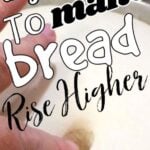
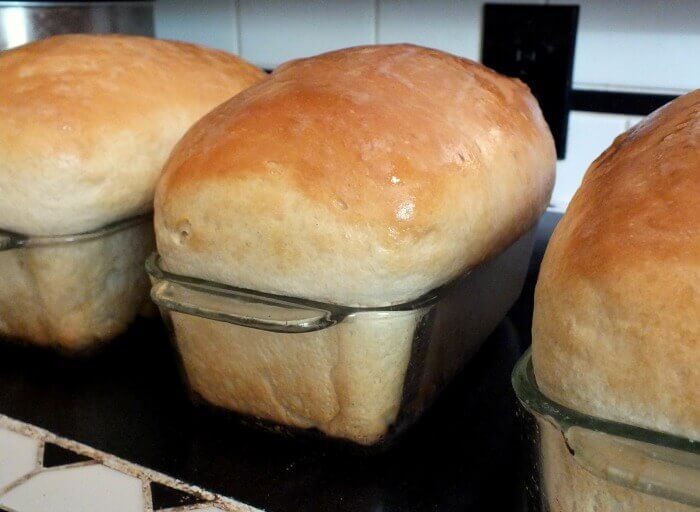

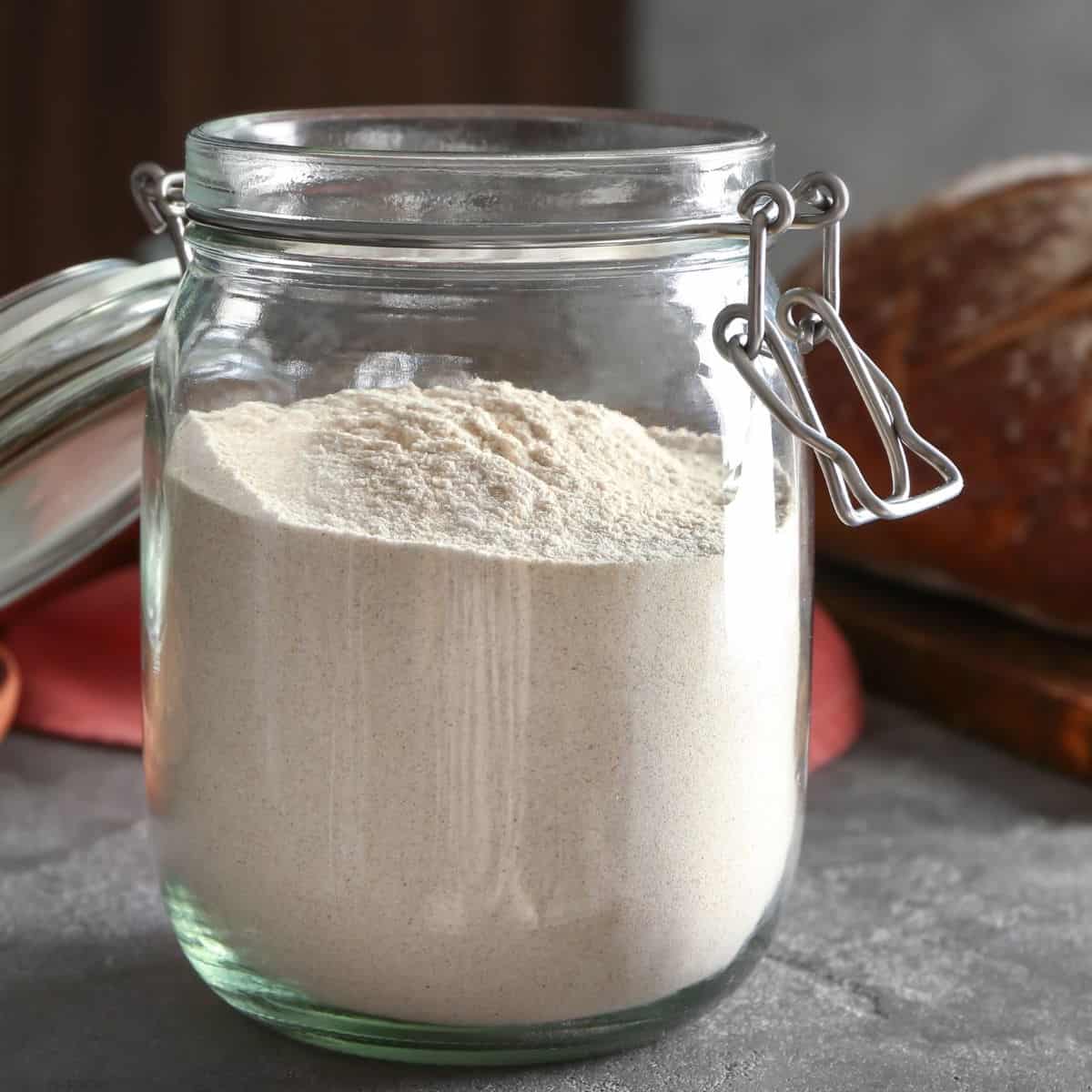
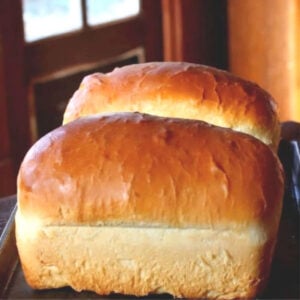
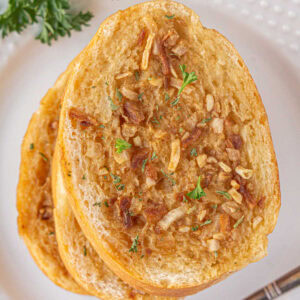
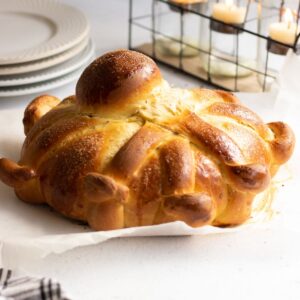
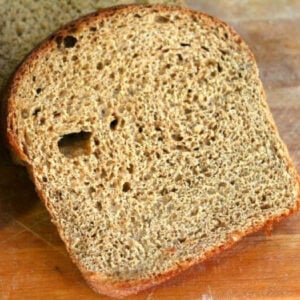
Kathy says
Hi, I have a question on using ginger, on one spot I see that you said !/4 tsp. and on another spot you say 1 tsp. so I wanted to know which one is correct? Thank you
Marye says
If you are making a bread recipe then 1/4 teaspoon. If you are making the recipe for the enhancer to USE in your bread recipes then it's 1 teaspoon. 🙂
Melody says
Yes, gave the vitamin C with orange flavour a go last night. No problem with taste. Lovely soft and crusty. My only observation was our wholemeal seeded bread hasn't risen as much the last two times. But the first time it didn't rise as much we hadn't tried the vitamin C trick. Only change is where we brought our powdered ginger and the fact that is getting hotter and more humid. The vitamin C didn't seem to have any effect on rising. We bake using a breadmaker and put it on a 13hr time delay to have it fresh in the morning. We store the yeast in the freezer, so we are a bit lost to why the decrease in rise. Happy baking.
Stacia says
Melody, don’t freeze your yeast. Freezing yeast kills certain bacteria strains. Since I’ve been keeping yeast in the fridge the yeast keeps its strength through the whole life of the jar. source: ken forkish, from his book: flour, water, salt, yeast.
Melody says
Hello, thanks so much for all your great tips with bread making. We love the addition of ginger it really works well. Thinking about trying the addition of vitamin C but seem to be only finding vitamin C with orange flavour. Will this effect the flavour of the bread or should I seek harder to find vitamin C with no flavour. All the best
Marye says
It might give it a slight orange flavor depending on how strong the flavoring was. I'd try it. 🙂
Melody says
Yes, gave the vitamin C with orange flavour a go last night. No problem with taste. Lovely soft and crusty. My only observation was our wholemeal seeded bread hasn't risen as much the last two times. But the first time it didn't rise as much we hadn't tried the vitamin C trick. Only change is where we brought our powdered ginger and the fact that is getting hotter and more humid. The vitamin C didn't seem to have any effect on rising. We bake using a breadmaker and put it on a 13hr time delay to have it fresh in the morning. We store the yeast in the freezer, so we are a bit lost to why the decrease in rise. Happy baking.
Erica says
When adding the milk powder, do we need to replace any of the milk/sugar or flour like you say to do with the gluten?
I am so excited to try this, I have everything ready to go!!
Also, just as a suggestion, I use a high protein flour (Wheat Montana is awesome!!), but it's not bread flour, and the Tbsp measurement is too much for 13% flour. You might want to suggest the 1 Tsp to 1 Tbsp difference depending on the protein level of the flour 🙂 Might make bread too dense with higher protein flours.
Marye says
No.
Roc says
Need help with Gluten-Free Flours! For a regular loaf, love the height and moistness when adding 1/4 tsp of ginger!
I have a few friends that cannot eat wheat. They hate the density of gluten-free bread.
I tried to use your 1/4 tsp of powder ginger with a GF flour with my Zojirushi bread machine and did use the GF button, but it was still flat but not as bad. Can you suggest maybe the proportions need changing or other ingredients to add? any help would be wonderful.
Marye says
I'm sorry. I am not familiar enough with gluten free flour to be any help.
Angela Weiland says
Hello! Thanks for the great tips...I am new to the bread making art and love it!! I love to learn all the tricks and stuff LOL but I was hoping you could share your opinion about if the ginger flavor is strong and changes the bread flavor that much? I appreciate your input.....again, thank you!!!
Angela
Marye says
Not at all. It just helps to get the yeast going.
Santhi says
Hi, I'm allergic for yeast I love to eat bread, do you have recipes that I can make bread without yeast.
I would appreciate if you can help me.
Thanks & Regards,
Santhi
Marye says
Hi Santhi,
Try this - you can use regular flour if you have it. https://www.restlesschipotle.com/easy-oatmeal-batter-bread-without-flour/
Linda Beus says
Just spent way to much time trying to save this in Pinterest and never did get it to work!
Marye says
I'm sorry. You can find the pin here - https://www.pinterest.com/pin/54746951707831012/
There's a glitch but I'm working on it.
Shirley says
Do you increase amount of yeast if making 8 loaves of bread.at one time
Marye says
I'd add 2 tablespoons or 2 packets is all.
Karen Adams says
Hi I was just wondering if you can taste the ginger in any of the bread you make. Thanks for all the great information.
Marye says
Nope! It only activates the yeast - it doesn't add flavor!
NC says
Firstly thanks for all the great info on this site. I am glad that you have listed the dough improvers which will help my dough rise....and other great resource which I plan to use. Also your story/background is such an inspiration for me especially about raising these many kids :))
Quick question:
You mentioned 2 tablespoon Instant Dry Milk Powder.. I just wanted to make sure before adding it. Because your HOMEMADE DOUGH ENHANCER MIXTURE has 1/2 cup non fat dry milk powder.
Now should i buy non-fat or full fat or skimmed or any regular milk powder...And does it have to be instant or regular? So I am confused.....please help 🙂 Thanks in advance.
Marye says
It's the same thing. 🙂
Donna says
There is instant nonfat dry milk and there is non-instant nonfat dry milk and they are not equal when measuring. 1 cup of Non-instant = 2 cups of instant. So which does your recipe call for?
Marye says
Instant. I've never seen anything else.
Bonita M says
Am excited to try your tips on adding ginger, Vitamin C or gelatin. Was diagnosed pre-diabetic 22 months ago and quit baking. My usual methods, potato water, mashed potatoes, potato flakes, malt syrup, etc., are now forbidden. I've tried commercial diabetic breads, YUCK, No Thanks. So thank you ever so much for these tips! Can't wait to try making whole grain bread again.
Question: do you use much whey, either sour or sweet, in your bread baking? I can't seem to use as much whey as we create from clabbering milk or yogurt making. I was a huge milk drinker, now I can't. I keep hearing it's wonderful for bread baking. Been going through Mom's cookbook collection. Just not finding the recipes I thought I'd find for whey bread.
Marye says
I don't use it but you can use it in equal amounts to replace water.
Robin says
You use so little malt syrup/powder in bread baking that it makes little difference. The starch in the bread will raise your blood sugar far higher than that little bit of malt. If you are really concerned about diabetes, you need to cut your carb consumption to no more than one slice of bread (approx 20 grams carbohydrate)or equivalent per meal or snack. You may even have to eat fewer carbs than that. Get a home blood sugar meter to check what raises your blood sugar to see for yourself how much you can tolerate. Check it at approximately 2 hours after each meal when you are able to until you get a sense of it.
Janet says
I grind my own flour. I sometimes add some AP flour when
making hard crusted rolls that have a very soft dough. I'm thinking I
will try the ginger.
I cannot get me sourdough breads to rise high. Please help. I even
add a 1/4 tsp of yeast with no success.
Please any advice would be appreciated.
Marye says
When you make your sourdough make sure you use spring water - tap water can contain chemicals that weaken the wild yeast. Also - keep in mind sour dough doesn't rise as high, usually... and since you are using home ground flour the wheat is heavy and keeping it from rising. You could use part white flour or add gluten flour. Hope this helps
Claudia Mortensen says
What role does the gelatin and the pectin play? I just like to understand these things. Thank you.
Marye says
They help stabilize the proteins in the flour, I believe.
fr33k says
Gelatin helps in shaping high hydration dough. That's it.
Rachylle sustiguer says
Can i use Vitamin C with wheat flour and AP flour combination?
Marye says
sure!
Heidi says
I use sourdough starter in our breads, even the regular recipes with dry yeast. My question is, can I use your dough enhancer without the C? Will the ginger be ok?
Also, I used to use potato water because grandma did, but when I retired and started this Sourdough adventure, I stopped. I think I’ll go back to using it when possible! Thanks so much.
Marye says
You should be fine without the C.
Dennis O Connor says
How long does your dough enhancer recipe keep in a refrigerator
MARYE AUDET-WHITE says
I've always used it within a short period of time. I'd think at least a month or two.
Tammy Schinhofen says
Will any of these tips work using almond or coconut flours?
MARYE AUDET-WHITE says
I don't think so, Tammy. 🙁 they need gluten.
Alice Shanks says
I live in North Texas and it has been raining for a week now so when I read rainy days were good I decided to make you honey buttermilk bread. Beautiful, I have never gotten this kind of rise. Thank you for this. Hope I can use use the ginger in my roll dough.
Marye Audet says
You can totally use the ginger in any recipe calling for yeast. I hear ya about the rain... we're in North Texas as well and our property is bordered by two creeks so we're watching them fill up! I am so glad you like the recipe!!
C2 INTERIORS says
can i use ginger to my sourdough bread? I have my own sourdough culture. Is it only powdered ginger or would fresh grated ginger work better?
Marye Audet says
I don't know if sourdough will work the same way as regular yeast? I'd give it a try - it's powdered